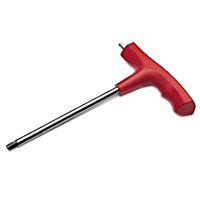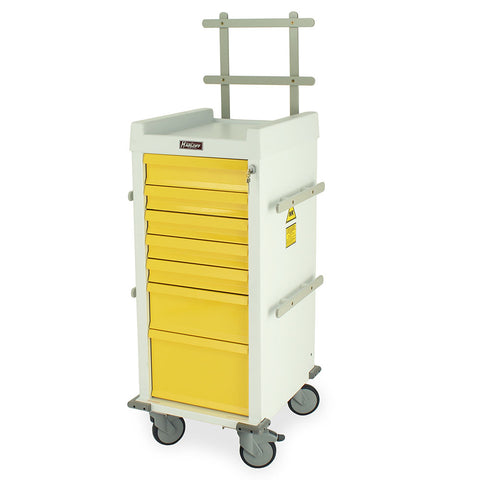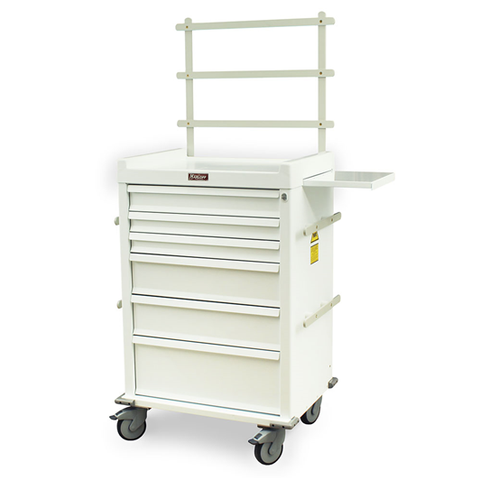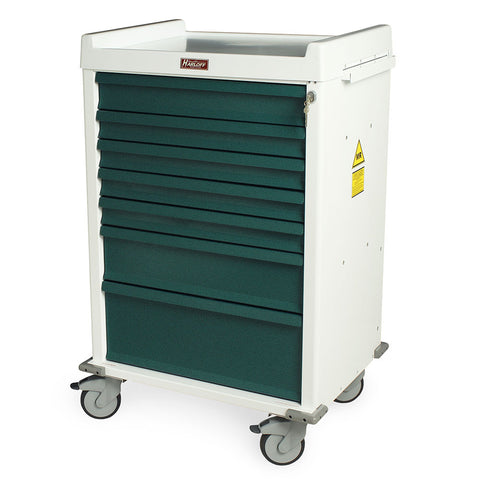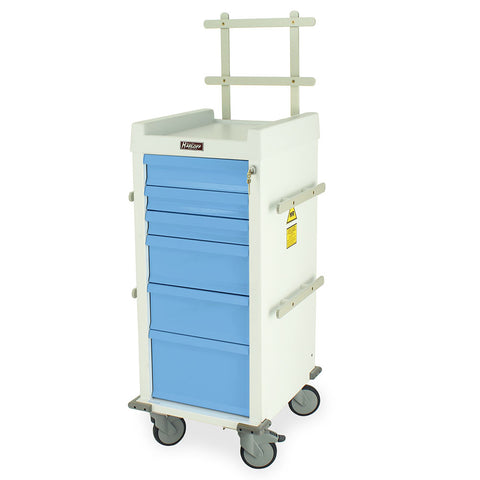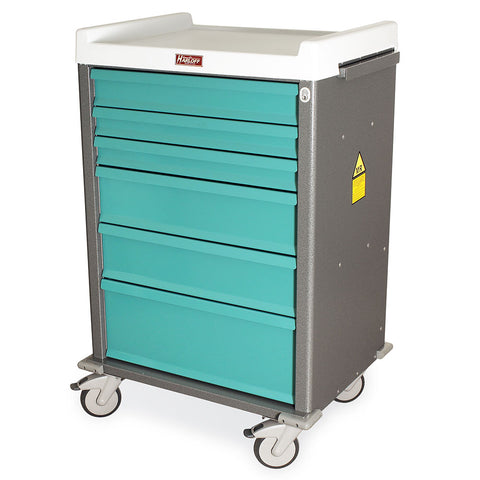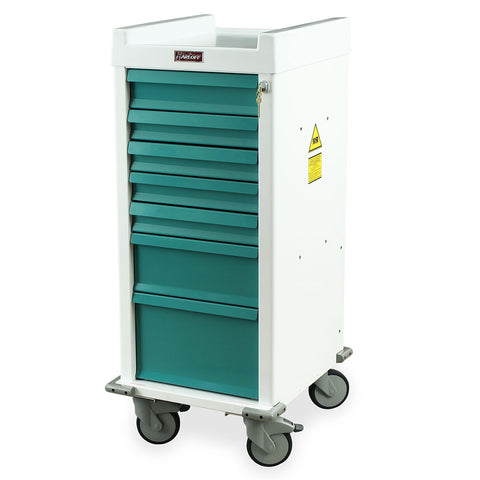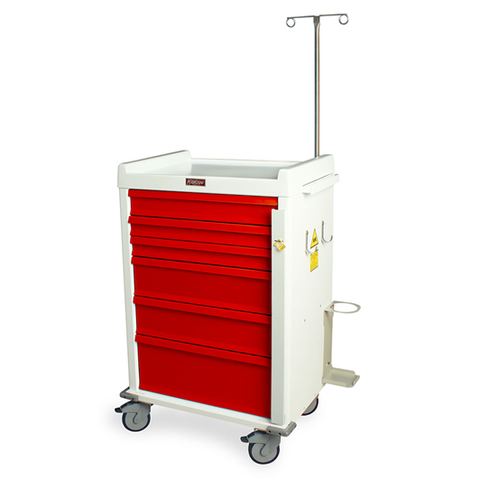Magnetic Resonance Imaging (MRI) technology has revolutionized medical diagnostics, but it also introduces unique safety challenges. Strong static magnetic fields, time-varying gradients, and radiofrequency (RF) energy can pose hazards to patients, staff, and equipment. The first line of defense in MRI safety is proper labeling. ASTM MRI safety labels, compliant with ASTM F2503, help facilities communicate risks, ensure regulatory compliance, and protect everyone in the MRI environment.
Introduction to ASTM MRI Safety Labels
Importance of MRI Labels for Patient, Staff, and Equipment Safety
MRI safety labels are critical for preventing accidents caused by magnetic interference or projectile hazards. Clear labeling ensures that MR Safe, MR Conditional, and MR Unsafe items are easily identified and handled appropriately. For example, MRI Med’s MR Safe Labels, 60-Pack provide a reliable, visible method for marking equipment that poses no known hazard.
Labels also help streamline workflow and reduce stress for staff, giving them confidence that each device has been tested and categorized correctly according to ASTM F2503.
How ASTM F2503 Labeling Prevents Accidents in MRI Suites
The ASTM F2503 standard establishes requirements for labeling medical devices, equipment, and materials in MRI environments. By classifying items as MR Safe, MR Conditional, or MR Unsafe, facilities can prevent incidents such as:
- Projectiles caused by ferromagnetic objects
- Device malfunctions due to strong magnetic fields
- RF heating of implants or conductive devices
For a broader overview of MRI signage and labels, see MRI Labels Demystified: Color Codes, Symbols, and What They Mean.
Understanding ASTM F2503 Labeling Requirements
Proper understanding of ASTM F2503 is essential for compliance and safety. The standard defines three key categories:
MR Safe: Green Labels
Green labels indicate items that pose no known hazard in any MRI environment. MR Safe labels are ideal for non-metallic, non-magnetic, and non-conductive devices. Examples include plastic storage bins, MRI-conditional beds, and other non-magnetic accessories.
-
Example product: MR Safe Labels, 60-Pack
Using these labels helps staff quickly identify safe equipment, reducing unnecessary checks and improving workflow.
MR Conditional: Yellow Labels
Yellow labels signify MR Conditional items, which are safe only under specific MRI conditions such as field strength, SAR limits, and device configuration. MR Conditional labeling must include all relevant parameters to prevent accidents.
-
Example product: MR Conditional Labels
Proper MR Conditional labeling is critical for devices like anesthesia carts, monitors, and infusion pumps that can function safely under controlled conditions.
MR Unsafe: Red Labels
Red labels indicate MR Unsafe items, which are hazardous in all MRI environments. These labels must be placed prominently on equipment that can cause injury or interfere with MRI operations.
-
Example product: MR Unsafe Labels, 12-Pack
Examples include ferromagnetic tools, non-MRI-approved carts, and devices containing conductive components.
Why Compliance Matters
Compliance with ASTM F2503 is not just about regulation—it is a critical safety measure:
- Prevents accidents and injuries in the MRI suite
- Protects expensive MRI equipment from damage
- Ensures alignment with ACR recommendations and other regulatory guidance
For a broader perspective on MRI warning signs and equipment safety, see Top 10 MRI Warning Signs Every Radiology Department Needs.
Equip Your Team with Tools They Can Trust
Get high-quality, MRI-dedicated equipment that supports safer scans, better positioning, and smoother patient care.
View Trusted ProductsProper Placement of MRI Safety Labels
Device and Equipment Labeling
All equipment entering the MRI scanner room (Zone IV) must have clearly visible labels that indicate MR Safe, MR Conditional, or MR Unsafe status. For example, MRI Med’s MR-Conditional Seven Drawer Anesthesia Cart features durable, visible MR Conditional labels for compliance.
Door and Zone Labels
Labels should be installed at each MRI zone transition (Zones I–IV) to communicate safety clearly. This ensures personnel and visitors are aware of the risks before entering restricted areas.
See MRI Zone Signs Explained: Zone 1–4 Requirements & Best Practices for zone-specific labeling guidance.
Patient-Facing Labels
Patient-facing labels provide important information during screening, preparation, and in patient information materials. They can indicate MR Conditional implants, prosthetics, or other considerations relevant to safe MRI use.
Common Mistakes and How to Avoid Them
Avoid Outdated Terminology
Do not use the term “MR Compatible,” which is outdated. Always use MR Safe, MR Conditional, or MR Unsafe as defined by ASTM F2503.
Failing to Specify MR Conditional Parameters
Every MR Conditional label must include specific conditions (field strength, SAR, configuration) to ensure safe use.
Poor Visibility or Placement
Labels that are difficult to see or are placed inconsistently can lead to accidents. Labels should be large, color-coded, and positioned in high-visibility areas.
Choosing ASTM MRI Safety Labels for Your Facility
Durable Materials for High-Magnetic Environments
Use laminated vinyl, rigid plastic, or aluminum to ensure labels remain legible and durable under cleaning and heavy use conditions. MRI Med labels are designed specifically for high-magnetic environments. On equipment that may come into contact with patients, insure liquid impervious fade resistant labeling is used.
Maintaining Compliance Over Time
Regularly audit MRI labels, replace damaged or outdated labels, and train staff to recognize MR Safe, MR Conditional, and MR Unsafe icons. This ensures ongoing compliance and reduces the risk of accidents.
For guidance on selecting the right labels for your equipment, see How to Choose the Right Labels for Radiology & Medical Equipment.
Conclusion: Ensure Safety with ASTM MRI Labels
Correct labeling protects patients, staff, and expensive MRI equipment. By following ASTM F2503 standards and using MRI Med’s compliant labels, facilities can maintain safety, streamline workflow, and meet regulatory requirements.
Explore MRI Med ASTM F2503-compliant MRI Safety Labels to find the right solution for your facility.
FAQs
1. What are ASTM MRI safety labels?
They are labels that indicate the MRI safety status of equipment or devices, classified as MR Safe, MR Conditional, or MR Unsafe according to ASTM F2503.
2. How do MR Safe, MR Conditional, and MR Unsafe labels differ?
- MR Safe: No known hazards in any MRI environment.
- MR Conditional: Safe only under specific conditions.
- MR Unsafe: Hazardous in all MRI environments.
3. Where should MRI safety labels be placed?
On all equipment entering Zone IV, at MRI zone transitions, and on patient-facing documents.
4. How often should MRI labels be updated?
Labels should be reviewed and updated regularly, especially after changes to equipment, procedures, or regulatory standards.
Related Blogs
- MRI Labels Demystified: Color Codes, Symbols, and What They Mean
- How to Choose the Right Labels for Radiology & Medical Equipment
- MRI Safety Labels 101: Standards, Icons, and Placement Guidelines
